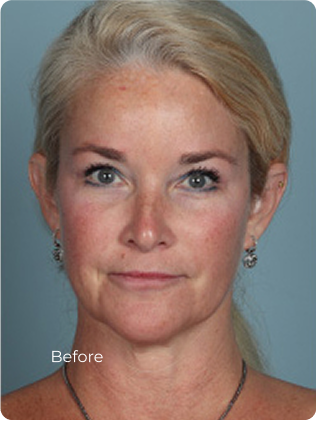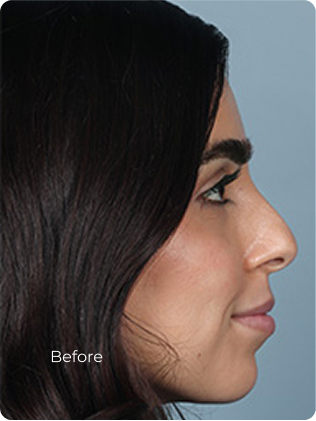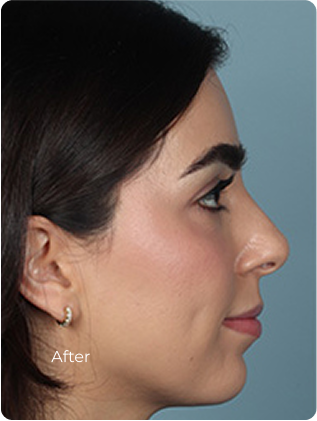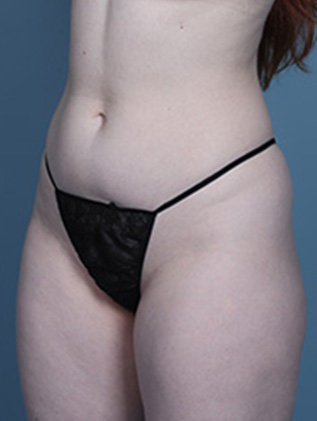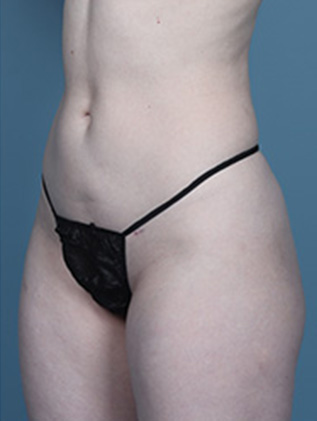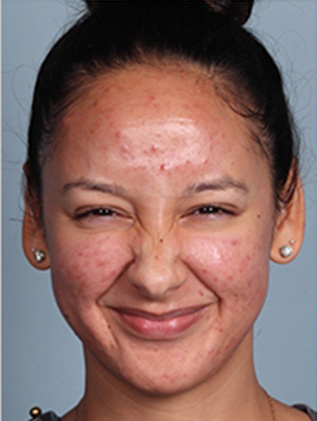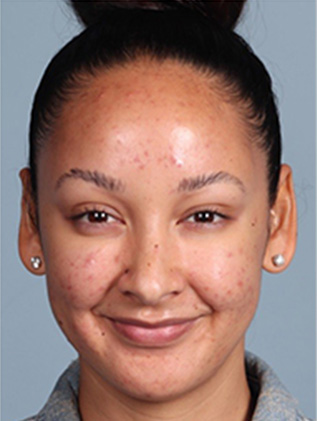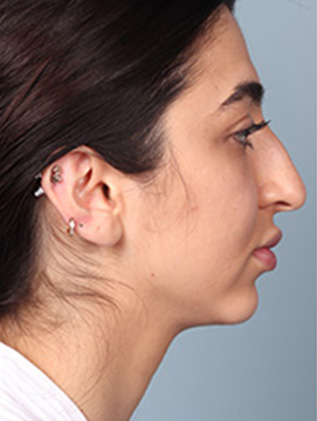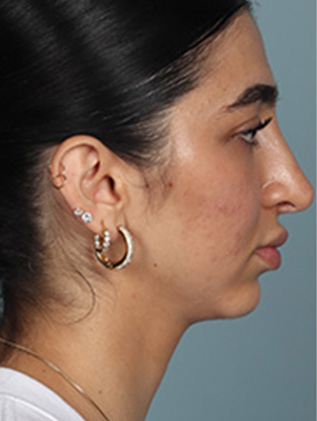By Dr. Luis Macias
Dissolving filler can be crucial for those wanting to reverse cosmetic procedures’ effects. Fillers help reduce fine lines and wrinkles by adding volume and fullness to the face. They are a popular cosmetic treatment for achieving a more youthful appearance, but as with any cosmetic procedure, there may come a time when you want to dissolve filler to restart the process or make adjustments.
If you’ve decided to dissolve your filler due to unsatisfactory results or simply wanting a change, there are some things you should know before and after the procedure. Choosing a conservative and experienced injector is crucial to ensure safe and effective treatment, minimizing complications, and achieving your desired outcome.
Hyaluronidase – the Basics
Hyaluronidase is the enzyme used to dissolve fillers. It works by breaking down the hyaluronic acid in the filler, which then gets absorbed into the body. It is a safe and effective method for reversing the effects of fillers, but it’s important to choose an experienced and qualified provider for this procedure.
Injecting hyaluronidase into the affected area breaks down the filler within 24 hours, though the full effects may take a few days to appear.
Hyaluronidase is the enzyme used to dissolve fillers. It works by breaking down the hyaluronic acid in the filler, which then gets absorbed into the body. It is a safe and effective method for reversing the effects of fillers, but it’s important to choose an experienced and qualified provider for this procedure. For a more detailed exploration of the pros and cons of dissolving fillers, you might find this Forbes article particularly helpful.
How to Dissolve Filler? What Does This Procedure Include?
Before the procedure, your provider will assess the filler you want to dissolve and determine the amount of hyaluronidase needed. They may also consider any allergies or potential side effects before administering the enzyme.
The injector administers hyaluronidase directly into the area where the filler was placed. Depending on the type and location of the filler, they may use a small needle or a cannula. The number of injections depends on how much filler needs to be dissolved.
After the procedure, you may experience mild discomfort or swelling in the treated area. Your provider may also recommend applying ice packs to reduce swelling and taking over-the-counter pain medication if needed.
The first hours after the procedure are crucial, as the hyaluronidase begins to break down the filler. Following your provider’s instructions is important and avoiding touching or massaging the treated area.
Expect the full effects of the filler to gradually disappear over the next few days. Your provider may schedule a follow-up appointment to assess the results and decide if more injections are necessary.
Are the Results of Hyaluronidase Immediate?
While many claim to see immediate results after receiving hyulorinadase injections, it’s important to note that the full effects may not be seen until a few days later. This is because the enzyme takes time to break down the filler and for the body to absorb it.
However, any swelling or redness from the injections may cause some visible improvement in the treated area immediately after the procedure. Depending on their metabolism and how quickly their body responds to the enzyme, some individuals may see quicker results than others.
Typically, 24-48 hours after the procedure, you should see a noticeable difference in the appearance of the filler. This can include reduced volume and smoother texture in the treated area. This is the time needed for the hyaluronidase to fully break down the filler and for your body to process it.
Am I a good candidate for the dissolve filler position?
This may be a personal choice, medical necessity, or dissatisfaction with previous filler results. Here are some cases when dissolving fillers are worth considering.
Filler Migrated to Undesired Areas
Imagine you have your lips filled and end up with a lumpy or uneven appearance. Such situations arise when injectors place filler in areas that already contain filler or are too close to another filler. In these cases, your appearance may swell slightly for a short period To avoid such undesirable appearances, dissolving fillers is the best choice.
In that case, the injector places hyaluronidase in the area where you want the filler removed. This enzyme breaks down the hyaluronic acid molecules in the filler, allowing them to disperse and be absorbed by the body.
Filler Is In the Blood Vessel
Although unintentional, sometimes injectors mistakenly place filler into a blood vessel instead of under the skin. This can lead to serious complications like tissue death and scarring. Providers will detect it by noticing skin blanching or the patient immediately experiencing severe pain, both signs that blood flow is being blocked.
To prevent any potential harm to your health, you should go to a doctor and have them dissolve the filler as soon as possible. This will allow for proper blood flow to resume and minimize any long-term damage.
Allergic Reactions
In rare cases, patients may have an allergic reaction to fillers, even if they have been using them for years without any issues. The symptoms can range from mild irritation and swelling to more severe reactions such as anaphylaxis.
If you experience any discomfort or unusual reactions after getting filler injections, consult with a doctor right away. They will be able to diagnose the issue and provide proper treatment, which may include dissolving the filler if necessary.
Long-Term Effects
While fillers are generally considered safe, there is still a lack of long-term studies on their effects.
To avoid any potential long-term effects, it’s important to consult with a trusted and experienced provider before getting filler injections. They will help you determine the appropriate amount and type of filler to use for your desired results without putting your health at risk.
You Have a Tyndall Effect
Blue discolored skin is a common side effect of fillers, known as the Tyndall effect. It occurs when filler is injected too superficially and can be easily seen in areas with thinner skin, such as under the eyes.
If this happens, you may notice a bluish tint under the skin where the filler was injected. Fortunately, an enzyme called hyaluronidase can quickly reverse this effect by dissolving the filler.
To avoid the Tyndall effect, make sure to choose an experienced and skilled provider who knows how to inject fillers correctly and safely.
The Filler Can be Infected
Like any other medical procedure, filler injections carry a risk of infection. This can happen when bacteria enter the injection site either during or after the procedure.
Symptoms of an infected filler include redness, swelling, pain, and warmth in the injected area. If left untreated, it can lead to more serious complications such as abscesses or skin necrosis.
To minimize the risk of infection, choose a reputable and sterile clinic for your filler injections. Follow post-procedure care instructions carefully and seek medical attention if you notice any signs of infection.
Side Effects Include Skin Necrosis
Skin necrosis is a rare but serious side effect of fillers that occurs when the filler blocks blood flow to an area of the skin. If not treated immediately, it can result in tissue death and scarring.
Common symptoms of skin necrosis include severe pain, bluish or grayish discoloration, and blistering or ulceration at the injection site.
If you experience any of these symptoms after getting filler injections, seek medical attention immediately. Early treatment can prevent further damage and improve the chances of a full recovery.
Common Risks Associated with Hyaluronidase Usage
Hyaluronidase, the enzyme used to dissolve fillers, also carries its own set of risks. These include allergic reactions, temporary swelling, and bruising.
It is important to disclose any allergies or medical conditions to your provider before receiving hyaluronidase treatment. They will also monitor you closely during and after the procedure for any adverse reactions.
Some common risks you should be careful about include the following:
- Inflammation and Redness: Some people may experience mild inflammation and redness in the treated area for a few days after hyaluronidase treatment. This is a normal reaction and should subside on its own.
- Swelling and Bruising: Similar to filler injections, swelling and bruising can occur after using hyaluronidase. Applying ice packs can help reduce these symptoms.
- Nerve Damage: In rare cases, nerve damage can occur during the injection process, leading to numbness or loss of sensation in the treated area. This usually resolves within a few weeks but can be permanent in some cases.
How Many Sessions Will Fully Dissolve Fillers?
The number of hyaluronidase sessions needed to achieve a complete result varies from person to person. It depends on factors such as the type and amount of filler used, the location of the injection, and individual response to treatment.
Some people may experience satisfactory results after just one session, while others may require multiple sessions for desired results. Your provider will assess your case and determine your best course of action.
Following up with your healthcare provider after each session is important to monitor progress and make any necessary adjustments. You can expect to see a complete result within a few weeks with proper care and monitoring.
Is There a Risk of Overfilling Filler Dissolver?
While this might sound paradoxical, overfilling is a risk when using hyaluronidase. Like any medical procedure, there are risks, so it’s crucial to choose a licensed and experienced healthcare provider for treatment.
Injecting too much hyaluronidase or performing injections incorrectly can break down more filler than intended, leading to an uneven or hollow appearance. This can also lead to complications such as lumps or bumps in the skin.
Injectors must use the right amount of hyaluronidase to achieve the desired result and avoid overcorrection. You need as much as necessary to dissolve the unwanted filler without overdoing it – meaning your provider should use just enough to achieve a natural and balanced result.
What If I Don’t Use a Filler Dissolver? Will the Filler Dissolve Itself Over Time?
Yes, fillers can dissolve on their own over time. The body may take several months or even years to fully break down and absorb the filler.
The length of time it takes for filler to dissolve depends on various factors, such as the type of filler used, the amount injected, and the individual’s metabolism. In some cases, certain areas of the face may metabolize filler faster than others.
If you choose not to use a filler dissolver and instead wait for the filler to dissolve naturally, you may have to deal with uneven results or possibly live with unwanted results until the filler has fully disappeared.
Most patients who have filler injections report that they start noticing filler dissolved after around six months. However, this can vary and some filler types may take longer to break down.
If you’re unsatisfied with your filler results or need to correct unevenness or overcorrection, don’t rely on time alone. Consult with your provider about using a filler dissolver.
It’s important to remember that while fillers are temporary, the effects can last for several months or even up to a year. This is why choosing an experienced and skilled provider who understands how much filler to use and where to inject it for natural-looking results is crucial.
In addition, maintaining proper skincare and following a healthy lifestyle can also help slow down the breakdown of fillers in the body. Staying hydrated and avoiding excessive sun exposure can help prolong the longevity of your filler results.
Is the Process of Filler Dissolvment Safe?
Yes, using a filler dissolver to break down and remove unwanted fillers is safe when performed by a trained and experienced provider. However, note that risks like bruising, swelling, or skin irritation at the injection site can occur.
When working with a certified specialist and without underlying health conditions that increase risk, filler dissolution is generally safe.
Is the Process of Filler Dissolvment Painful?
While individual pain tolerance may vary, most patients report that using a filler dissolver causes discomfort. To minimize that, the injection site may be numbed with a topical anesthetic beforehand.
After the procedure, some patients may experience slight discomfort or soreness at the injection site, but this typically resolves within a few days.
It can be painful if you have a low pain tolerance and are especially sensitive to injections, so be sure to discuss any concerns with your provider beforehand.
How Long After Using the Dissolver Can I Have a New Filler?
It is generally recommended to wait at least 2 weeks after using a filler dissolver before getting a new filler injection. This allows the dissolver to fully break down and remove the previous filler from your body.
However, the exact timing may vary depending on individual factors such as the type of filler used, the amount of filler dissolved, and your body’s natural healing process. Your provider can give you more specific guidelines based on your unique situation.
If you chose dissole]ver to correct a botched filler or unwanted results, it’s important to allow your body enough time to heal fully before getting a new filler injection. Rushing into another filler treatment too soon can increase the risk of complications and may not give you the desired results.
Will My Skin’s Elasticity Suffer from Using a Filler Dissolver?
No, using a filler dissolver should not affect your skin’s elasticity in the long term. The dissolver specifically targets and breaks down the hyaluronic acid found in fillers, leaving your natural collagen and elastin intact.
In addition, maintaining good skincare habits and using products with ingredients that promote collagen production can also help improve and maintain your skin’s elasticity. These may include retinoids, vitamin C, and peptides.
Which Care Do I Need After Getting a Filler Dissolver Injection?
After getting a filler dissolver injection, it’s important to follow any specific aftercare instructions provided by your provider. This may include avoiding certain activities or products for some time.
You should generally avoid touching the treated area and applying pressure for at least 24 hours after the injection. You may also be advised to apply ice or cold compresses to help with any swelling or discomfort.
It’s important to keep the treated area clean and dry and avoid using skincare products containing active ingredients such as retinoids, glycolic acid, or vitamin C for at least 48 hours. These ingredients can potentially irritate the skin and interfere with the healing process.
You should also avoid strenuous exercise, saunas, and hot tubs for at least 24 hours after the injection to prevent excess swelling and potential infection.
Avoiding excessive sun exposure and wearing sunscreen daily to protect your skin from UV damage is also recommended. Sun exposure can break down hyaluronic acid and affect the longevity of your filler results.
Additionally, following up with your provider after getting a filler dissolver injection is important. They can assess the treated area and provide any further recommendations or touch-up treatments if needed.
Can I Somehow Dissolve Fillers at Home and By Myself?
Never attempt to dissolve fillers at home or by yourself. Only trained and experienced medical professionals should dissolve fillers using FDA-approved dissolving agents.
Attempting to dissolve fillers at home can be dangerous and lead to complications such as infection, scarring, and permanent damage to the skin. It’s important to seek professional help if you are experiencing any issues with your filler injections.
Additionally, using over-the-counter products or homemade remedies to dissolve fillers may not be effective and could potentially harm your skin.
Summary
Luckily, filler dissolvers exist to safely and effectively dissolve fillers in case of complications or dissatisfaction with the results. So if you once did not like your filler results or are experiencing any issues with your fillers, do not worry! A filler dissolver injection from a qualified medical professional can help you achieve your desired look.
Just remember to follow all aftercare instructions and consult with your provider for any concerns or additional treatments. Remember that fillers are temporary, and their effects will eventually wear off, but a trained professional should always completely remove fillers. Overall, filler dissolvers provide a safe and effective solution for unwanted or unsatisfactory results. So don’t hesitate to seek help from your provider if you have any concerns about your fillers! They are there to help you achieve the best possible results and ensure your satisfaction with your appearance.
